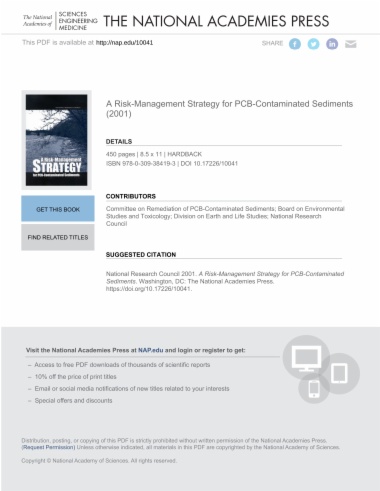

This book provides a risk-based framework for developing and implementing strategies to manage PCB-contaminated sediments at sites around the country. The framework has seven stages, beginning with problem definition, continuing through assessment of risks and management options, and ending with an evaluation of the success of the management strategy. At the center of the framework is continuous and active involvement of all affected parties—particularly communities—in the development, implementation, and evaluation of the management strategy. A Risk-Management Strategy for PCB-Contaminated Sediments emphasizes the need to consider all risks at a contaminated site, not just human health and ecological effects, but also the social, cultural, and economic impacts. Given the controversy that has arisen at many PCB-contaminated sites, this book provides a consistent, yet flexible, approach for dealing with the many issues associated with assessing and managing the risks at Superfund and other contaminated sites.